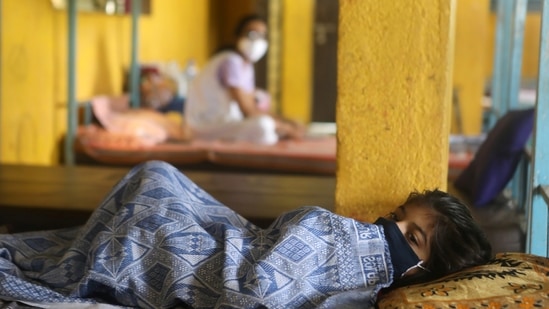B.1.617 spread grows in India and overseas
The B.1.617 is a variant with three sub-lineages – B.1.617.1, B.1.617.2 and B.1.617.3.
The B.1.617 variant has become the most dominant in the country, Union health minister Harsh Vardhan announced on Monday, confirming growing clues from the global scientific community that show the mutated virus has spread rapidly not just within India but in several other nations.

The minister said this variant now accounts for 65% of all variants of concern found in India when researchers carried out whole genome sequencing of samples. This data matches information uploaded to a global database known as the GISAID Initiative, where the variant accounts for over 70% of samples analysed in the most recent 45-day period in India, and has spread to 49 other countries.
“When we talk about genome sequencing, over 25,739 samples have been sequenced by INSACOG and 9,508 were found with variants of concern. Out of these, B.1.617 variant was found in almost 65% of the samples making it one of the most common variants,” said Harsh Vardhan, who was speaking at the 27th meeting of the high-level Group of Ministers (GoM) on Covid-19.
Also read | Covid-19: What you need to know today
The INSACOG is a consortium of 10 institutes of the Centre, which is involved in the genome sequencing of the Sars-CoV-2 virus. The health minister also said that state governments have been requested to send the samples regularly for genome sequencing.
The B.1.617 is a variant with three sub-lineages – B.1.617.1, B.1.617.2 and B.1.617.3.
While the minister did not give frequency data, GISAID data analysed by outbreak.info showed the spread has been rapid: In the last 45 days, B.1.617.1 and B.1.617.2 together account for 70% of all Sars-CoV-2 genomes sampled in India. Of these, B.1.617.2 appears to be particularly gaining prevalence, rising from around 1% prevalence on March 1 to over 70% in the beginning of May.
Till Monday, there were 14,737 sequences uploaded from India. Sequences data uploaded to GISAID allows researchers to study the timing and distribution of variants – a level of detail that Indian authorities have not fully disclosed.
According to outbreak.info, Maharashtra, Gujarat, Delhi and Bihar may have the highest proportion of cases with B.1.617.2.
In the case of B.1.617.1, which is slightly different and appears to have been overtaken by B.1.617.2 in recent days, the states with the highest prevalence are Maharashtra, Haryana, Andhra Pradesh and Madhya Pradesh.
To be sure, these are not based on random sampling and prevalence may be biased based on how widely and regularly a state sends samples for whole genome sequencing.
Also read: No proof that kids will be affected more in the next wave, say experts
Maharashtra, with 3,250 sample data shared on GISAID, has carried out the most genome sequencing than any other state. In comparison, Uttar Pradesh, with the largest population in the country, has uploaded 34.
“Unfortunately, we are still very under sampled in terms of the sequencing data in India so hard to tell what exactly is happening. Specifically, how the B.1.1.7 lineage and B.1.617 lineage and sublineages are competing. Right now, most of our preliminary analyses are coming from the data out of the UK,” said G Karthik, researcher at Scripps Research Institute, which has put together the mutations tracker at outbreak.info.
The B.1.617 lineage has triggered alarm in several other countries and has been designated a variant of concern by most health agencies. In the US, federal health officials said late on Sunday they are ramping up their surveillance of the variant as experts warned that under-vaccinated areas could become hot spots as the country opened up.
Late on May 22, the UK released preliminary assessments that show vaccines, while still effective, may have a reduced ability to prevent symptomatic disease with the new variant, especially if people have only taken one dose, as compared to how they worked with the old variant.
Public Health England, in its latest technical briefing, also found that the variant first seen in India leads to more secondary infections than the B.1.1.7 variant, which was first seen in the UK and was among the first set of mutations that could spread faster than the virus that was originally seen in Wuhan.
Another analysis of GISAID data showed 50 countries have together found B.1.617.2 in over 7,500 samples. Of these, 1,200 have been shared from India, which first found the variant in a sample taken on December 10. Since then, India has uploaded 7,476 samples while the UK, which has done the highest amount of sequencing, has shared 331,773 samples since it first found the variant on March 18, according to cov-lineages.org.
Cov-lineages.org also showed that there were a large proportion of samples with the lineages recently in Hong Kong, DR Congo, China, Bangladesh and Singapore.
India passed 300,000 confirmed coronavirus deaths on Monday, with fatalities remaining high despite the country flattening out the number of new cases in its devastating pandemic wave. Experts have on several occasions called for authorities to do more to improve the rate of genome sequencing in order to catch dangerous variants before they become widespread.






